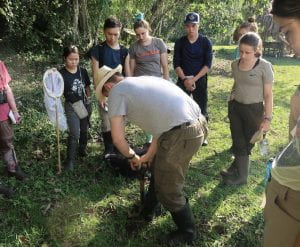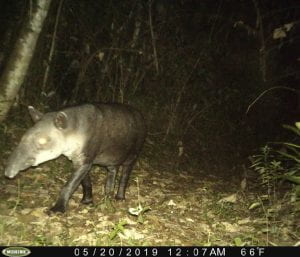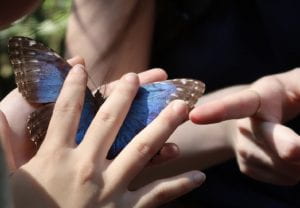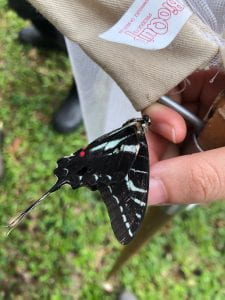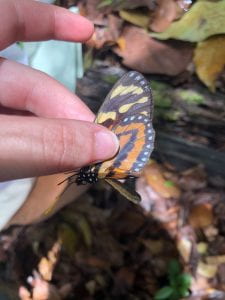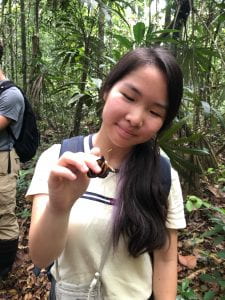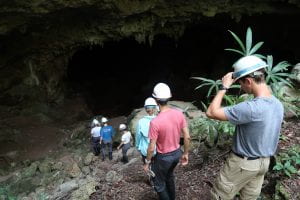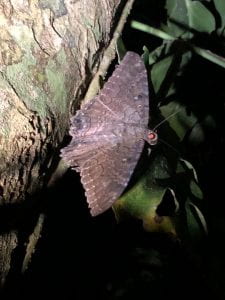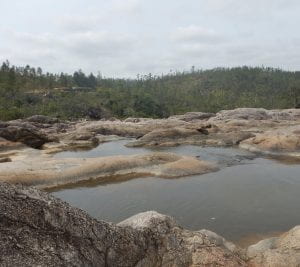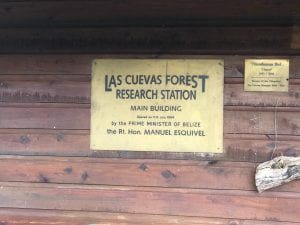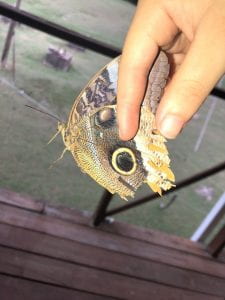Today is sadly our last day in the rainforest, but I am excited for the reef!
This morning the class again made the strenuous 8-mile journey down the trail along the right side of the 50-hectare plot, then the Monkey Tail Trail. We retrieved the 7 camera traps that we had set up along that path on our first day in the rainforest. The class completed the whole trek before lunch while on the first day we took the whole morning (then lunch) and part of the afternoon. We definitely hiked at a faster pace, which made the journey a little harder. Along the Monkey Tail Trail, the class hiked faster in part because we did not want to give the ticks (hidden in the tall brush) the time to fall onto us and suck our blood.
I observed 3 blue morphos, but felt less compelled to catch them since my task had already been completed. I am at peace now. Out of the 3 blue morphos, 2 were spotted together and 1 alone. It seems strange to me that we have observed the blue morphos in pairs (At least 3 times over the course of our time in the rainforest) as they are supposedly solitary creatures. Either way, I appreciate every opportunity I get to see these iconic rainforest beauties.
That afternoon, the class went out to observe leafcutter ant/fungus obligate mutualism firsthand. First, Scott tried to excavate a younger nest in the clearing and find the fungus chamber, but was unsuccessful. Then, we found a HUMONGOUS ant colony along the Monkey Tail Trail—so large that it was almost the equivalent of a small hill that the entire class could stand upon. Scott managed to find the fungus chamber fairly quickly and grabbed a portion of the fungus for us to examine up close. Soldier ants came pouring out (as to be expected), and they were huge and aggressive. Amanda was bitten by one of these soldier ants and, in the process, it tore a small chunk out of her pants. Scott said that, given enough time, these ants could chew through our rubber boots. I am not going to test this claim out.
Excavation of small leafcutter ant colony
The class ended the night with lectures on the geographical and biogeographic history of Central American and the Caribbean and mammals. After the lectures came the exciting part—looking through camera trap pictures. In total, we captured 2 curssows, 2 unknown birds, 1 possum, 1 skunk, 1 tapir!, and 1 unknown earred animal. The camera that I adopted (its name is Rice 2) caught a picture of a male curssow and a stunning picture of a tapir (I am so proud!). The picture is so clear that you can see the enormous size of its whole body as it walks along the trail. Probably the best photo of the lot! Another interesting capture was a photo of an unknown earred animal. The animal had gotten too close to the camera, and the flash saturated the facial features of the animal, but we were able to distinguish the shape of the ears and some fur, leading us to believe that the animal was a puma. It is frustrating that we cannot confirm this. Either way, a great and successful ending to an exciting week full of new experiences. Thank you Las Cuevas Research Station!
Tapir caught on Rice 2 camera trap!

